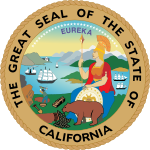1922 California Proposition 16
| Elections in California |
|---|
 |
Proposition 16, also known as the Chiropractic Initiatives Act, was a California initiated state statute proposed and passed in 1922 to allow for the creation of a state board of chiropractic examiners. Proposition 16 passed with 481,600 Yes votes, representing 59.5 percent of the total votes cast.[1][2] On the same day, voters approved a similar health care reform, Proposition 20, which allowed for the creation of a state board of osteopathic examiners.[2][3]
At the time of the vote, 22 states had already passed laws similar to Proposition 16.[4]
Official summary[edit]
- Allowed for the creation of the California Board of Chiropractic Examiners with members appointed by the governor and paid for from receipts under the act.[5]
- Prohibited the practice of chiropractic without a license from a board-approved institution.[2]
- Required board-approved institutions to have at minimum 2400 hours of classroom time with minimum hourly requirements for set topics
- Allowed for the state board to revoke a chiropractic license
Results of vote[edit]
| Choice | Votes | % |
|---|---|---|
| 481,600 | 59.50 | |
| No | 327,849 | 40.50 |
| Total votes | 809,449 | 100.00 |
| Source: 1922 Statement of Vote at General Election | ||
References[edit]
- ^ Statement of vote. Sacramento, Calif. : The Secretary. 1968. p. 55. Retrieved 25 October 2019.
- ^ a b c Voter Information Guide for 1922, General Election. UC Hastings Scholarship Repository: California Ballot Propositions and Initiatives. 1922.
- ^ Statement of vote. Sacramento, Calif. : The Secretary. 1968. p. 57. Retrieved 25 October 2019.
- ^ "Chiropractic Bill Number 16". San Francisco Chronicle. 6 Nov 1922. Retrieved 25 October 2019 – via Newspapers.com.

- ^ "Election Proclamation". The San Bernardino County Sun. 14 Oct 1922. Retrieved 25 October 2019 – via Newspapers.com.

